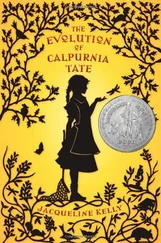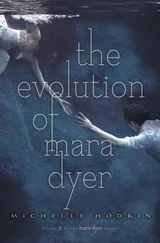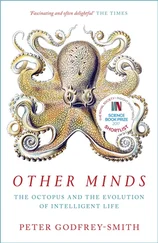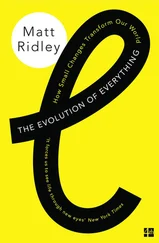That is how Céleste and I spent three days. These were three days of odd bliss that I spent with my little animal friend. These were my last three days of freedom in the human world.
In addition to all our joyful cartoons, we also, occasionally, watched the news. Although the time we spent in that room almost immediately blurred into the animal-minded time of liquid, dreamlike continuum (I had unplugged the alarm clock, and took but passing notice or interest in the lightening or darkening of the rising day or falling night behind the thickly drawn curtains), I believe it must have been on the second afternoon or night that, as a cartoon we were enjoying had ended and been superseded on that channel by some less diverting programming, I snatched up the remote control and began flicking through the many channels, looking for something fun to watch, and settled briefly on a local news broadcast. Céleste, who sat beside me on the bed in our nest, picking with her dirty fingers at a platter of seaweed-wrapped salmon pâté, gave me a lazy-blooded and dismissive wave of her hand to indicate that I should skip past this channel, because it was boring. However, I shushed her, because I thought I recognized a building on the screen. The establishing shot that led into the news segment was of the Erman Biology Center: I recognized that magisterial ornate gray stone architecture, the cornices and gargoyles, the ivy crawling up the stones. It was a video of a curious crowd gathered around the entrance to the building, which was cordoned off by long strips of bright yellow police tape. A lot of police officers were milling around by the building’s entrance as two paramedics wheeled what looked like a body out of the doors on a gurney. The body was covered with a sheet. I turned up the volume. The voice on the TV told us that a certain Dr. Norman Plumlee, a research scientist and tenured faculty at the University of Chicago and lab director of the Behavioral Biology Laboratory at the University of Chicago’s Institute for Mind and Biology, renowned in scientific circles for a long career of groundbreaking research on animal cognition and primate psychology, was found dead that morning in a laboratory on the third floor of the Erman Biology Center at the University of Chicago by a graduate student who worked at the lab, who had immediately notified the police. Dr. Plumlee appeared to have been brutally murdered by an unknown assailant. The police had no suspects and no leads at that time, and knew of no possible motives for the crime. Dr. Plumlee was beloved by his students, some of whom were interviewed, croaking their bafflement at the strange and horrible crime into the reporter’s camera in various states of shock and tears. Dr. Plumlee’s wife was also interviewed, expressing shock, anger, and immeasurable sorrow. The police were offering a reward for any information leading to the resolution of this terrible crime. Then the newscasters promised weather and sports updates after the break, and a commercial came on, and I continued flicking through the channels until I found a Porky Pig cartoon, which made us laugh, and I picked up the phone and ordered up another bottle of wine, and again we pleasantly forgot all the trouble in the world, the leavening effects of the wine and the Looney Tunes banishing all thoughts dark and grave from our minds as the birdsong banishes winter.
Later (was it the following evening? I don’t remember, and have no way of estimating) the TV said it had come to light that Dr. Norman Plumlee, on the night he was murdered, had been performing experiments on a thirteen-year-old female chimpanzee named Céleste, whom the laboratory had on temporary loan from the Lincoln Park Zoo. This chimp — most likely the only witness to the murder — had escaped, having apparently been deliberately set free, probably by Dr. Plumlee’s killer or killers. While investigators were not willing to rule out the possibility that the chimp herself had killed the scientist, it seemed unlikely for several reasons: that Céleste had no history of violence and was by all accounts a small and fairly docile chimp; and although chimps are extremely strong and can be violent when surprised or provoked, said the TV, forensic experts reported that the nature of the fatal wounds was extremely uncharacteristic of an animal attack. Plumlee had almost certainly been killed by repeated trauma to the head with a blunt object, most likely a badly damaged computer keyboard which had been found near the body. Probably the most telling evidence of human involvement, though, was the trail of bloody shoe prints that led from the scene of the crime all the way outside the building, where the unknown assailant had wiped his shoes off in the grass. Police were investigating the possibility that the crime was committed in connection with the Animal Liberation Front, or other animal rights or ecoterrorist organizations. This theory was circumstantially corroborated by the fact that all of the video cameras in the room, which were there to capture experiment data, had been switched off shortly before the estimated time that the murder took place, indicating some sort of human premeditation. The animal may be on the loose, and residents of the Hyde Park neighborhood and surrounding areas were advised to be on the lookout for an escaped chimpanzee. If you see the animal, pleaded the woman behind the news desk on the TV, please immediately call this number (which scrolled across the bottom of the screen) to contact City of Chicago Animal Care and Control Services. Disturbingly, several pornographic magazines as well as traces of semen had also been found at the crime scene. Police still had no witnesses or suspects.
The next segment dealt with the outpouring of community grief at the University of Chicago, with shots of a candlelit vigil and so on, and more tearful interviews with Dr. Plumlee’s colleagues and students. The woman on the TV began to mention the connection Dr. Plumlee had to the infamous case of Bruno, the Chicago chimp who — (here I changed the channel).
The animal-rights-terrorist-group angle was not, after all, strictly incorrect. In a way I had acted as an animal rights terrorist cell of one. But I did not liberate an animal for larger ideological reasons. I liberated just one animal for deeply personal reasons, and in so doing, as we will see, I imprisoned myself. But come to think of it, I did not liberate Céleste, either — in the end I only delivered her into another kind of captivity. If it isn’t one kind of captivity, it’s another. There’s no way out, no way out. You see, my actual feelings on animal rights are somewhat complicated and ambivalent. One hears much talk these days of free-range animals and cage-free eggs and so on. On the one hand I suppose it’s a good thing to acknowledge our debt to the animals we enslave and kill for our pleasure by making their lives prior to slaughter as pleasant as possible, while on the other hand the impulse strikes me as emblematic of a romantically rosy view of nature. It’s all a paradox anyway. If we think of the whole world as a prison, then there’s no such thing as a cage-free animal.
On the third and last day that Céleste and I spent in our hotel room, a breaking news flash in the middle of the day announced that the brutal murder of Dr. Norman Plumlee had been solved.
The murder had been committed by a man named Haywood Finch, who worked as a night-shift janitor at the University of Chicago. Mr. Finch was probably the only other person in the building at the time of the murder. The police had apprehended Mr. Finch the previous evening and taken him in for interrogation, where they almost immediately obtained a full confession. Mr. Finch confessed both to murdering Dr. Plumlee and setting the chimp free. Mr. Finch, a developmentally disabled man — said the TV — had a long history of psychiatric and emotional disturbances and was severely autistic, with only a third-grade education and an IQ of 54. Police psychologists judged Mr. Finch to be a highly mentally unstable person and suggested that he may have a violent personality disorder.
Читать дальше












